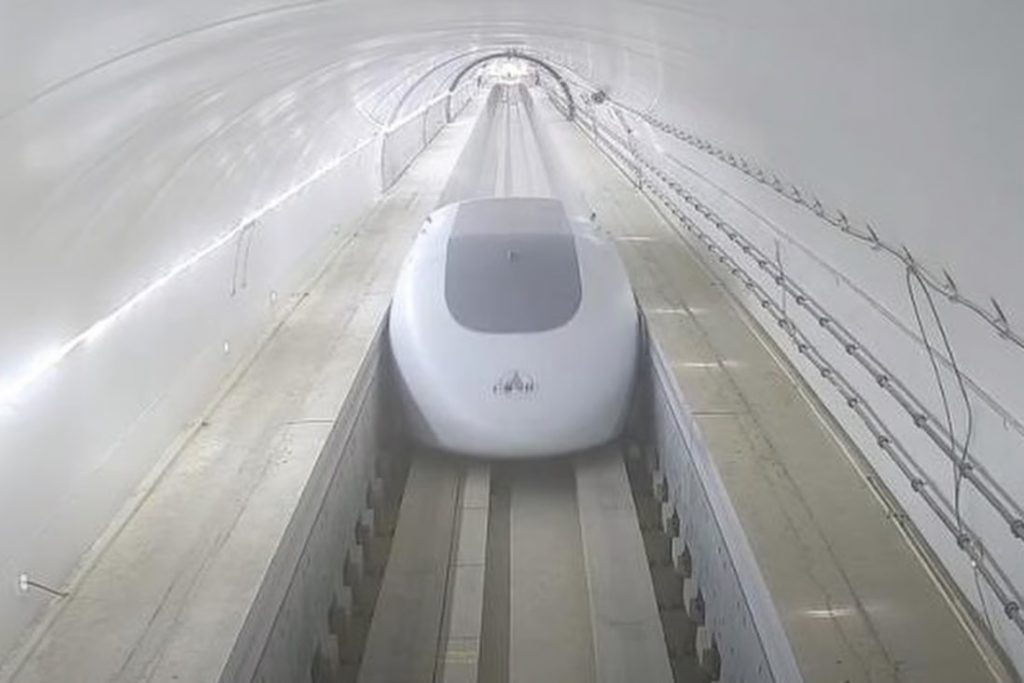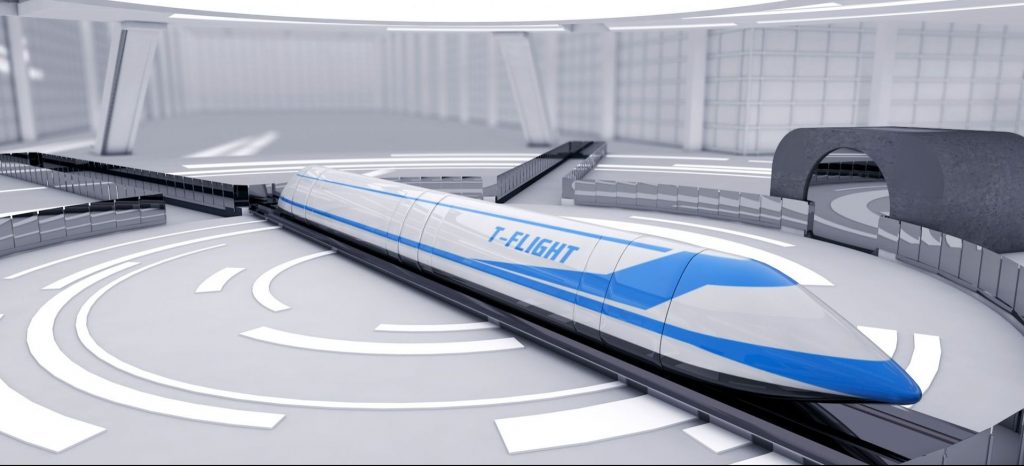China’s hyperloop project, which aims to develop ultra-fast land transport technology, has successfully completed its first test runs using a full-sized passenger capsule. The test runs took place at a superconducting maglev test line in Datong, Shanxi province, and the capsule reached speeds of up to 50km/h, travelling a distance of 210 metres each time.
The project aims to eventually carry passengers and cargo at a speed of 1,000km/h or faster in a near-vacuum tube, which would make it the fastest ground-based transport technology in the world. The test runs were conducted by defence contractor China Aerospace Science and Industry Corporation (CASIC), which built and operates the facility.

CASIC reported that critical components, including superconducting magnets, high-power electric systems, AI safety controls, wireless communication devices, and sensors all worked as planned during the tests, paving the way for future experiments at higher speeds. The idea of a “hyperloop” tube train was first proposed by SpaceX founder Elon Musk in 2012, and he established The Boring Company to bring the idea to life.
Virgin Galactic founder Richard Branson also joined the race with a similar venture, Hyperloop One, in Los Angeles. However, both projects have faced financial and technical challenges, with Hyperloop One reportedly laying off more than 100 employees and abandoning the idea of transporting humans, and The Boring Company dismantling its test tunnel last year. China was late to the hyperloop game, as CASIC did not break ground on the Datong facility until April of last year.

However, it took less than a year for the project team to complete its first test run after the start of construction, which China Space News attributed to innovation and strong government support. The test facility’s tube currently measures 2km in length and is expected to be extended to 60km over the next few years to achieve a top speed of 1,000km/h.
CASIC has been involved in the development of advanced weapons systems, including rail guns and the DF-17, China’s first hypersonic missile to enter service. Some military experts believe that new technologies developed at the Datong hyperloop facility, such as electromagnetic propulsion and power management systems, could be used for defence.
RELATED:
- Best of CES 2023 – Wireless TVs, Urine Sensor, Smart Desk, & More
- Tecno Phantom X2 5G Review – A Brave Attempt to Take on Established Rivals
- WeRide L4 Self Driving Minibus Receives Beijing’s First Road Test License
- Vivo Republic Day Sale: Offers On V25 Series, Y75, and More
- Elon Musk Begins Auction of Iconic Assets from San Francisco Twitter Headquarters
(source)






